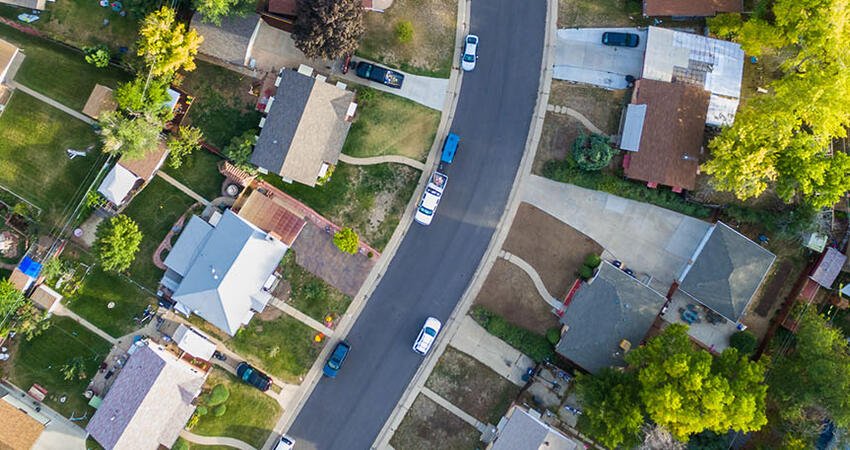
Can Housing Policy Help Reduce Gun Violence?
by Christina Plerhoples Stacy
Correction: an earlier version of this blog post incorrectly said that demolitions in Cleveland reduced property crimes by 0.08 percent per quarter. It has been corrected to 0.08 crimes per quarter.
Survivors of the recent school shooting in Parkland, Florida, and students across the country have come together to raise awareness about gun violence, not just in schools, but more broadly in high-crime neighborhoods. For some, it’s not just the rare mass shooting that affects them, but the violence they experience every day. Housing and neighborhood conditions perpetuate this violence.
Vacant buildings have been shown to increase violent crime, and substandard housing contributes to disorder that encourages crime. Gun violence also reduces the growth of new retail and service businesses and slows home value appreciation. Reductions in violent crime can spur economic development, which can further improve neighborhood conditions.
Communities can leverage local housing and neighborhood policies to address gun violence through tools such as demolition, vacant property maintenance and reuse, foreclosure mitigation counseling, homeownership support programs, code enforcement, and zoning.
Demolish vacant and dangerous buildings
Demolishing vacant and dangerous buildings has reduced crime in several cities. In Saginaw, Michigan, vacant-building demolitions reduced violent crime by 6.7 percent per year, and demolitions in Cleveland reduced property crimes by 0.08 crimes per quarter. Before implementing a demolition strategy, however, local leaders should consider the regional context, as demolitions may push crime toward the edges of the city and into inner-ring suburbs.
Maintain or repurpose vacant properties
Maintaining vacant properties by cutting the grass, picking up trash, planting new grass, planting trees, and installing fences on vacant properties can reduce crime. One randomized controlled trial showed that these interventions reduced overall crime by 13.3 percent and gun violence by 21.9 percent for around $5 per square meter for the initial work and $0.50 per square meter for maintenance.
Additionally, an analysis of the City of Philadelphia’s Doors and Windows Ordinance that required property owners of abandoned buildings to install working doors and windows in all structural openings found that these remedies were significantly associated with citywide reductions in overall crime, total assaults, gun assaults, and nuisance crimes.
Prevent foreclosures through counseling and homeownership support
Perhaps the best way to prevent the violence caused by vacant buildings is to prevent these buildings from becoming vacant in the first place. Foreclosure mitigation counseling has been shown to prevent foreclosures, as have assistance loans for homeowners at risk of foreclosure. And homeownership support programs such as shared equity and integrated homeownership support programs produce sustainable homeowners who are less likely to undergo foreclosure. Because it is not necessarily foreclosure that causes an increase in crime but the vacancy caused by that foreclosure, policies aimed a postforeclosure vacancy reduction could also prevent violence.
Strengthen code enforcement to target crime and other health concerns
Departments that enforce property maintenance laws can reduce crime by reducing disorder and increasing economic investment in neighborhoods. They can do this by demolishing and maintaining vacant properties and by enforcing standards for occupied housing. Research under way in Memphis suggests that strategic code enforcement using these methods can reduce crime and improve public health more broadly.
Use zoning to address problem properties
Zoning can also be used to reduce crime. In Baltimore, a new city code called Transform Baltimore addresses the location, distribution, and density of alcohol outlets. One provision of the zoning code requires nonconforming liquor stores in residential neighborhoods to relocate, close, or convert to an approved use. Two related provisions prevent further overconcentration of liquor stores in commercial areas and strengthen regulations for taverns that sell alcohol for both on- and off-premises consumption. Because liquor stores have been linked to elevated levels of violent crime, the new zoning code should reduce crime in the affected neighborhoods. My work with Johns Hopkins colleagues is examining this new policy’s rollout and determining the pathways through which zoning laws can improve health and reduce violent crime.
One component of a broader effort to reduce gun violence
Planning, zoning, code enforcement, and other housing and land-use interventions are just a small piece of what the nation can do to prevent gun violence. But planners and housing officials can be effective and essential partners in reducing gun deaths and children’s exposure to violent crime. And housing and neighborhood improvements can lead to reductions in asthma, mental health problems, developmental delays, heart disease, behavioral and learning problems, and physical injury.
Ending gun violence calls for policies and programs at all levels of government and across many agencies, sectors, and disciplines. Improving vacant, substandard, and abandoned properties is one small piece of achieving this goal.


